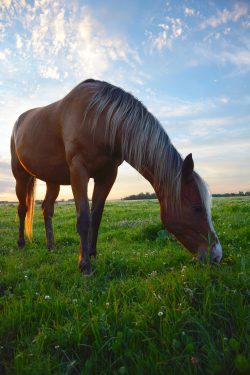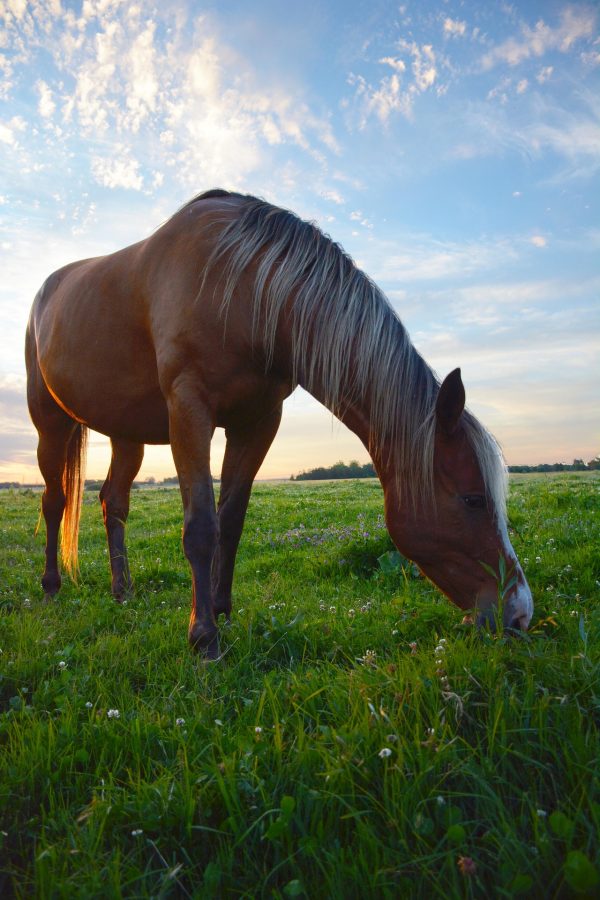When the grass is growing and your horse’s waistline is too, it can be tricky to stop them ballooning. A good doer can be just as troublesome as a horse who struggles to hold their weight, and it’s a careful balance of restricting and carefully selecting their food, while ensuring they still have enough fibre and nutrients to stay healthy.
Here are a few ways to help manage your good doer:
Restrict quality
- Avoid letting the horse graze on lush grass
- Avoid feeding concentrates, or opt for high fibre feeds without high fat or energy content
- Try to partially substitute grass with hay, and opt for older or soaked hay to provide good fibre content with less nutritional value
Keep moving
- Regular exercise is a really good way to use up excess calories, which would otherwise be stored as fat
- Keeping your horse active can help to boost their metabolism, and means that their body will be able to burn calories more efficiently
- Even 30 minutes of walking work each day can make a difference, whether it’s in-hand, ridden, lunged or on a walker
Restrict quantity
- Putting your horse in a paddock which has already been grazed will ensure they are not accessing large amounts of grass
- Use electric fencing to strip graze – moving both the back and front fence forward a little at a time – or instead divide your field into small paddocks
- Consider part stabling your horse so they only have free access to grazing for some of the day
- A grazing muzzle can be used to prevent a horse from grazing freely where other options are not available. However, most are not designed to be used 24 hours a day so bear that in mind
- While stabled, consider using a small holed hay net to encourage slower eating. This also helps to support trickle feeding which is the most natural and healthy way for a horse to eat
‘Starving’ a horse to help control weight is never a good idea; a starved horse can develop other issues such as gastric ulcers, slowing down of the digestive function or even develop vices such as weaving, cribbing or windsucking – and of course they won’t be consuming important nutrients which they find naturally in forage.
Feeding Horslyx Balancers alongside a restricted diet can allow your horse a natural ‘trickle feed’ approach to balance nutrient deficiencies in forage and grazing. One of the advantages of feeding a Horslyx Balancer rather than a bucket feed is that intakes of molasses are little and often; the time it takes to consume a daily ration of a lick is far greater than a bucket feed.
While many people might think the molasses in Horslyx Balancers would make it unsuitable for a good doer, if fed in a regulated way, Horslyx Balancers are even suitable for horses and ponies prone to laminitis. Feeding Horslyx Balancers at the recommended daily allowance of 250 g per day to a 500 kg horse would actually only provide 82.5 g of sugar, which is less than the sugar in 2 kg of good hay (approximately 100 g)! This is minimal in comparison with a day of grazing grass where a horse can consume up to 50 kg of fresh grass, which equates to around 2000 g of sugar. It is important to remember that sugar is a natural part of the horse’s diet and horses are highly efficient at digesting it, as long as the intakes are little and often. Allowing access to Horslyx Balancers, even if restricted, can give you peace of mind that your equine is still receiving a balanced diet without the risk of adding extra sugar and starch through concentrate feeds.


